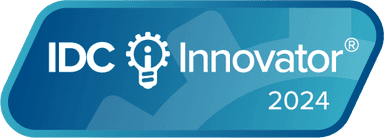From Zero to One at 3x Speed: How ClickHouse Launched its Cloud Database from Scratch with m3ter

One of the best decisions we ever made. m3ter allowed us to focus on our customers and strategy, not implementation.
The ClickHouse Cloud offering needed to be built from scratch, with usage-based pricing and billing capabilities delivered within the one-year timeframe, so the team could meet customer demand and bring its first commercial offering to market. By engaging a partner for metering and billing implementation, the ClickHouse team was able to free up time to iterate on their pricing model and strategy, and add metering and billing to their offering in just two months.
ClickHouse open source beginnings
ClickHouse is a high-performance, column-oriented SQL database management system (DBMS) for online analytical processing (OLAP). It is used widely for customer-facing and internal real-time analytical reports from non-aggregated data. ClickHouse was open sourced in 2016 and quickly became one of the most popular open source projects in its category, with one of the largest groups of contributors for any open source project.
When the company was officially founded in 2021, the founders of the company – Yury Izrailevsky, Aaron Katz, and Alexey Milovidov – set the business up to have a singular focus on the customer and placed high value on transparency, in large part due to the open source history. ClickHouse’s global user base praises its reliability, fault tolerance, and usability – but they had long been clamoring for a cloud offering, and to get a commercial offering to market, the company needed to deliver it. Fast.
Countdown to ClickHouse Cloud: One year
The user base had made it very clear: They did not want the team to focus on an enterprise version of ClickHouse. They wanted a serverless experience that would be even easier to use than the self-managed option that was available at the time.
To meet this demand as rapidly as possible, the team set an ambitious goal of building ClickHouse Cloud in a series of aggressive sprints in just one year (2022): Private Preview in May, Public Beta in October, and General Availability in December.
At each stage of development, different levels of billing, metering, and pricing capabilities would be needed:
- Private Preview (May - July) – Pricing would not be needed yet as the product was free, but ideally there would be proof of concept (e.g., the ability to show mock bills).
- Public Beta (October) – Billing needed to be ready.
- General Availability (December) – Full rollout of all capabilities needed to be ready.
Members of the ClickHouse Product team – including Tanya Bragin, VP of Product and Krithika Balagurunathan, Senior Director of Product Management – had bootstrapped cloud offerings at other companies before and knew how heavy the lift would be to build a custom billing, metering, and pricing solution internally. In addition, it wasn’t clear yet what the right pricing strategy would be, even though they had settled on some form of usage-based pricing (UBP). Tanya knew they would need to provide detailed requirements to Engineering, but there wasn’t enough certainty yet which metering and billing capabilities would prove critical.
Why ClickHouse chose m3ter as an ambitious pricing platform partner for an ambitious timeline
Tanya received the link to the m3ter blog while trying to figure out how to tackle the enormous challenge facing her team, and it immediately caught her attention. Here was a pricing platform partner that could enable three key capabilities – flexibility to experiment with pricing models, billing transparency, and operational maturity – while enabling ClickHouse to meet the aggressive timelines it had set to launch the new cloud offering.
We decided early on that we would focus our limited cycles on innovation – designing and building the serverless architecture and intuitive user experience – things that are core to launching our offering – and find a partner through which we could easily deploy, configure, experiment, and do analytics around metering, pricing, and billing. Once I heard about m3ter, it was a no-brainer.
Ability to iterate
The ClickHouse team knew a usage-based pricing model was best for its users. It needed a flexible platform where the team could experiment throughout the year (while building ClickHouse Cloud) and beyond, and subsequently implement changes to the metering and billing pipeline.
On the way to Public Beta, the team experimented with various pricing models within m3ter, using the platform to build mock pricing plans using real product consumption data from Private Preview users. Between March and June, Tanya was able to combine real results in m3ter and customer feedback to narrow down the potential pricing models, all in time for the implementation phase in July.
The real test came when the solution was released in Public Beta. Earlier, the ClickHouse team introduced the concept of a read and write unit, while this was a fair model and made sense to current ClickHouse users they interviewed during Private Preview, it confused developers newer to ClickHouse, who were not as well-versed in the platform. The team chose to move forward with a simplified pricing model based only on consumed storage plus compute measurements. This clearly aligns value to their product and incentivizes positive use of the cloud offering. Thanks to m3ter, they were able to quickly pivot and implement this change between Public Beta in October and GA release in December.
Flexible platform
From an implementation perspective, the ClickHouse team was looking for a flexible metering and billing platform that would meet their requirements not only for today, but into the future. They found m3ter was the only solution that could transform raw usage metrics into billing dimensions with ease. In addition, it was important to track live usage of these dimensions, display real-time usage metrics to customers, price, and ultimately bill, they needed a system that was incredibly flexible.
From our first demo, it seemed like every question we asked, the answer was ‘Yes, you can do that.’ It quickly became clear that we could easily configure the system to do what we want it to do.
Tanya noted that if the team had built it themselves, not only would it have taken 3x longer, but they would have ended up with a purpose-built in-house tool rather than a platform. With m3ter, ClickHouse has full control over future pricing and packaging innovation, making it easy to change pricing, release add-ons, and launch new features without having to re-architect and rebuild.
Billing transparency
ClickHouse’s core value of transparency was top of mind when choosing and implementing a pricing platform. Especially because the team had landed on usage-based pricing, they knew how important it was to avoid surprising customers with bills. They needed real-time tracking and the ability to push data into a dashboard in their platform to deliver a great customer experience.
With m3ter, billing has been a non-issue for ClickHouse Cloud. Customers have full access to their own usage and spend data, enabling them to accurately predict costs and adjust consumption as needed.
Operational maturity
Another thing that stood out for Tanya was the operational maturity of m3ter. The team knew it needed to launch its cloud offering within an aggressive timeline, so it was important to find a partner that had experience supporting customers in production.
The team felt confident about the m3ter platform’s stability and availability, as well as the m3ter team itself and their extensive knowledge and helpful engagement with any questions.
Time to market: 2 months instead of 6+ for billing implementation
Getting ClickHouse Cloud up and running quickly was crucial. The company did not yet have a commercial offering, and there was significant pent-up demand for a hosted cloud offering from creators of ClickHouse.

With m3ter, it was almost instant. We were able to make quick decisions and execute on that without worrying about the Engineering overhead of implementing that change. It was really impactful for the business. That's powerful.
The time it took to build ClickHouse Cloud was approximately one year. Of this, billing was only two months. Without m3ter, it could have taken six months or more. Reducing the development cost of billing by 3x, let the ClickHouse team focus on their core capabilities and partner with industry leaders for theirs. Innovation through strategic partnership.
Pace of innovation
During the Public Beta stage, the ClickHouse team was able to use m3ter to rapidly innovate on three key initiatives:
- Promotion
The team introduced a promotion to incentivize conversions during the beta period, which was as simple as configuring it in the system and giving it a name. In past experiences, this would have taken six weeks of development in a custom billing implementation, but with m3ter, it was almost instant. The team was able to make quick decisions and execute without worrying about the Engineering overhead of implementing a change.
- Pricing change
Innovation on the pricing model continued through the Beta period, after the team discovered that some dimensions were opaque to users. m3ter enabled ClickHouse to continuously iterate without delaying their timelines.
- Developer services
This was a whole new cost-effective offering introduced for General Availability that was aimed at individual developer workloads. Adding new SKUs was much simpler with m3ter than with any of the Product team’s prior experiences with custom solutions.
The implementation was the least of our concerns. We could focus on the strategy. We didn’t have to worry about how long it would take us or if we would still make the General Availability timeline – we knew the implementation piece would be a breeze because of m3ter. We could just focus on doing what was right for our customers.
Usability across teams
m3ter is being used across the ClickHouse team and saving valuable time and resources. On the Engineering side, both the UI and API are used to roll out pricing and adjust over time. Because ClickHouse has pricing across many cloud providers and regions, the API is automating updates to avoid introducing human error.
When there are customer billing escalations, engineers and customer success teams turn to the reporting in m3ter. But not everything gets escalated to the Engineering team at ClickHouse, because both the Operations team and Sales team are comfortable going into m3ter themselves, whether to provision additional credits, see the customer’s historical usage, or talk to the customer about how they’re trending toward consuming their committed spend. With a bi-directional Salesforce integration, the Sales team can also see directly in Salesforce the amount of credits billed per customer, making it easy to have informed customer conversations. m3ter has become ClickHouse’s trusted source of billing data – the go-to place for any active investigation.
What’s next for ClickHouse Cloud
ClickHouse Cloud officially launched in December 2022, but the pricing journey does not end there. Tanya noted, “We have to build into the process that there are many unknowns. Pricing is not a static thing, and you also can’t just pull it off the shelf – especially not with usage-based pricing. You have to constantly adjust, not only during the zero to one phase, but also after the initial introduction. A cloud offering is alive, and we will continue to evolve ours using m3ter.”
If you're ready to transform your business and automate your usage-based pricing and billing with m3ter, reach out to us here and we're happy to help.
Read more about ClickHouse’s journey to build ClickHouse Cloud in under a year here.
Ready to upgrade your monetization stack?
See a demo, get answers to your questions, and learn our best practices.
Schedule a demo


